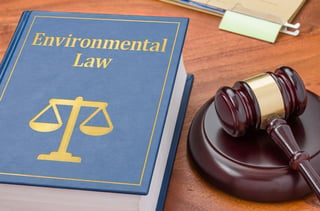
5 Top Factors When Investigating Environmental Claims
 The universe of environmental claim handling is as complex as it is vast. An environmental claim consists of many variables. The type of spill, as well as the amount of the spill, are both crucial factors. Not to mention, the location and exposure timeline.
The universe of environmental claim handling is as complex as it is vast. An environmental claim consists of many variables. The type of spill, as well as the amount of the spill, are both crucial factors. Not to mention, the location and exposure timeline.
Something as arbitrary as gallons of milk may constitute an environmental contamination whereas exposure to propylene glycol may not. I know, you're asking yourself, how can milk, an opaque white fluid rich in fat and protein, constitute an environmental hazard and propylene glycol, a major component of ethylene glycol (aka antifreeze), a poisonous substance, not constitute an environmental hazard?
Gray Areas
State regulatory rules determine what is or is not an environmental hazard, and there are always gray areas. The key factor in determining where you stand in an environmental exposure is the location. As the saying goes, location, location, location is everything!
For example, a semi-trailer hauling 80,000 gallons of milk was involved in a collision resulting in over 25,000 gallons of milk spilling onto a major roadway in Maryland. The local agency required the owner of the semitrailer to clean up the spill, and the local authority monitored the remediation under its Spill Act requiring the owner of the semitrailer to excavate and test the soil quarterly.
In Indiana, a company installing an HVAC system during the reconstruction and remodeling of a college campus caused thousands of gallons of propylene glycol to leak into the soil and groundwater. In this case, the Indiana Department of Environmental Protection did not constitute the substance to be hazardous to the environment or public health. The owner of the property decided to perform the remediation under a voluntary remediation program.
In other cases, an owner of the property may not become aware of contamination until the sales transaction of the property takes place and an environmental inspection, also known as a Phase I Assessment is completed. This will require an investigation of the exposure timeline as well as other potentially responsible parties.
Naturally, the main goal for an owner of a potential environmental risk is to transfer the risk to its insurer. In many cases, as described in the examples above, there may not be an environmental risk or the risk was not discovered until the sale of the property and there is no specific date of loss.
The best way to handle environmental claims is to focus the investigation around 5 factors that are identified below.
5 Top Environmental Claims Investigation Factors
 #1 What Choice of Law Applies?
#1 What Choice of Law Applies?Although a claim may have occurred in Indiana, it is not for certain that Indiana Law will apply. In a Choice of Law analysis, courts have considered the location of the business corporation, the location where the policy was written, the location where the policy was delivered and the location of the environmental release. In most instances, all of these location variables will differ. For example, an oil and gas exploration company's corporate office may be based in Colorado. The policy was written in Illinois and delivered to the insured's agent in Texas, and the policyholders drilling operations and the release occurred in Louisiana.
If you're fortunate, all your contacts will be located in one state but this is not typical. Confirming the Choice of Law is critical.
#2 Is There an Occurrence?Did the policyholder receive a notice letter from the local authority requiring it to investigate and remediate a spill under a Spill Act or is the policyholder cleaning up a spill under a voluntary remediation program? Most commercial general liability policies do not require an insurer to provide coverage under its policies if the policyholder is responding under a voluntary remediation program.
It is important to complete a thorough investigation in determining whether or not there is a duty to defend and/or indemnify a policyholder for an environmental claim. The duty to defend has always been greater than the duty to indemnify. In some cases, this has been a positive for insurers because environmental cleanup costs can peak to billions of dollars impacting high-level excess policies.
In some states, investigating an environmental exposure is not considered an indemnity cost and will not impact the policy limits because it is considered an expense. That is, unless the policy is an expense erosion policy.
#3 Did the Environmental Risk Occur During the Policy Period?Many pollution claims are the result of years of accumulated contaminants. Did this claim occur recently during the policy period, or did it occur gradually through the years, and just recently discovered?
#4 Does the Pollution Exclusion Apply?This is a tricky area. There is much confusion around what is covered, and what is excluded. It’s important to understand and be up to date on the current environmental laws surrounding this.
#5 Policy Limit ExhaustionBusiness underwriting collaboration is a major factor in environmental claims. The business underwriter may assist with locating underwriting files for lost policies, and determining the intent of an exclusion or endorsement. The underwriter should also advise whether the policy for which the claim is being investigated has exhausted or is near exhaustion.
Other variables or factors may exist in addition to the 5 major factors mentioned here.
Conclusion
The complexity of environmental claim handling is increasing with the discovery of substances that once were thought to be harmless now turning out to be considered a danger. Adding to the complexity are the on-going changes to federal, state and local laws when it comes to the environment.
Focusing on these 5 major factors is a good place to start with your investigation for any environment claim.


